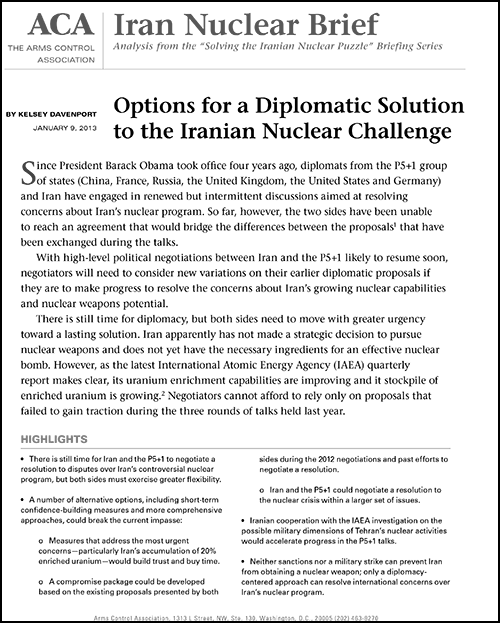By Kelsey Davenport
January 2013
 |
| Download PDF |
Since President Barack Obama took office four years ago, diplomats from the P5+1 group of states (China, France, Russia, the United Kingdom, the United States and Germany) and Iran have engaged in renewed but intermittent discussions aimed at resolving concerns about Iran's nuclear program. So far, however, the two sides have been unable to reach an agreement that would bridge the differences between the proposals that have been exchanged during the talks.
With high-level political negotiations between Iran and the P5+1 likely to resume soon, negotiators will need to consider new variations on their earlier diplomatic proposals if they are to make progress to resolve the concerns about Iran's growing nuclear capabilities and nuclear weapons potential.
There is still time for diplomacy, but both sides need to move with greater urgency toward a lasting solution. If each side provides slightly more flexibility and creativity, it may be possible to bridge the gaps and reach a resolution that addresses the most urgent proliferation risks posed by Iran's nuclear program, as well as Iran's desire to continue some nuclear activities and begin to remove elements of the severe sanctions regime that has been put in place.
Presentations from earlier briefings in the ACA "Solving the Iranian Nuclear Puzzle" series are available from the ACA here.
